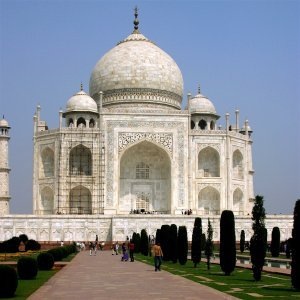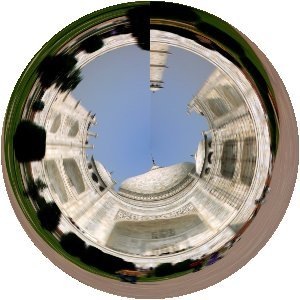| 5.7. Polar Coordinates | ||
|---|---|---|

|
5. Distort Filters |  |
Figure 17.64. Example for Polar Coordinates filter

Original image

“Polar Coordinates” filter applied
It gives a circular or a rectangular representation of your image with all the possible intermediates between both.
![[Note]](images/note.png)
|
Note |
|---|---|
|
These options are described in Section 2, “Common Features”. |
Slider and input box allow you to set the "circularity" of the transformation, from rectangle (0%) to circle (100%).
This option controls the angle the drawing will start from (0 - 359°), and so turns it around the circle center.
When this option is checked, the drawing will start from the right instead of the left.
If unchecked, the mapping will put the bottom row in the middle and the top row on the outside. If checked, it will be the opposite.
If unchecked, the image will be circularly mapped into a rectangle (odd effect). If checked, the image will be mapped into a circle.
These polar coordinates are active only if the “Choose middle” option is unchecked.
Checked by default: origin center is at the middle of the layer. If unchecked, you can modify X an Y parameters to position the origin center.
The result of this filter can be larger than the original image. With the default Adjust option, the layer will be automatically resized as necessary when the filter is applied. With the Clip option the result will be clipped to the layer boundary.